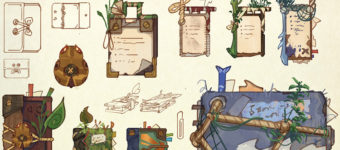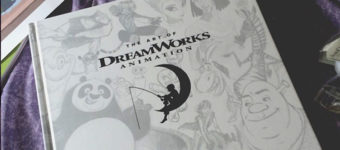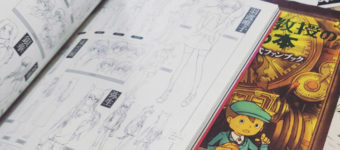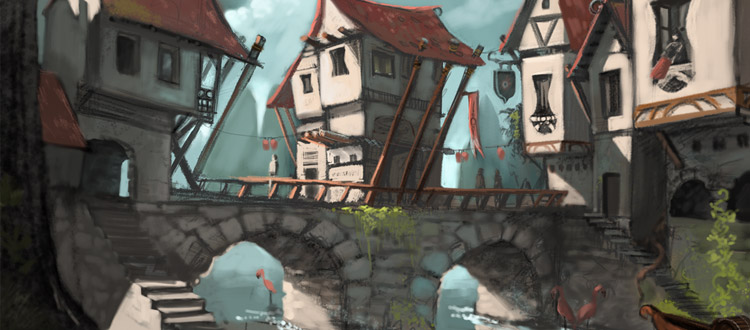
Characters, Props, Or Environments: Picking A Concept Art Specialty
The job of a concept artist is to create ideas that have never existed before and fit them together in a creative project. In many ways concept artists design these ideas so that they fit into a certain style or narrative.
But it’s rare to find someone that can do everything, so most concept artists choose to specialize. The three primary subject areas are character designs, prop designs, and environment designs.
These different topics can break down further into sub-specialties like weapons, vehicles, costumes, or interiors. This is the beauty of focused concept art. By picking an area of interest you’re able to build skills in one particular subject matter, which usually then leads to better results.
New artists may have no idea where to start or what to consider for career prospects. I’d like to cover these specialties in more detail with explanations for each potential career track.
Character Design
The most popular specialty in the concept art world is character design. These artists get paid to create characters based on personality traits, background, and sometimes a few recommended design features.
I’m making an assumption that most readers here want to follow the 2D route. But there’s a huge industry centered around 3D character art for rendering and bringing characters to life. Some character artists even vie for both 2D and 3D work.
Video game artists tend to have a different style than vis dev/character artists for animation. Animation gives more leeway to try out creative styles beyond just realism.
This means illustrators may prefer to go the character route with a focus on animation. It’s just as competitive as video game design so the jobs are similar in quantity. But if you’re dedicated and good enough there’s no reason to count yourself out.
The road to becoming a character artist is paved with quality work. You have to put in the hours to get anywhere. But it helps to understand the requirements for character art and what you can do to expedite the learning process.
We only have so many hours in the day so use them wisely. Once you understand the fundamentals you should dive right into character designs from all angles. These examples from Moize Opel are unique and inspiring.
But character artists can also get tasked with designing creatures and monsters for video games. These are usually enemies that you battle in-game, so they need to be designed well enough to render properly and simulate realistic movements.
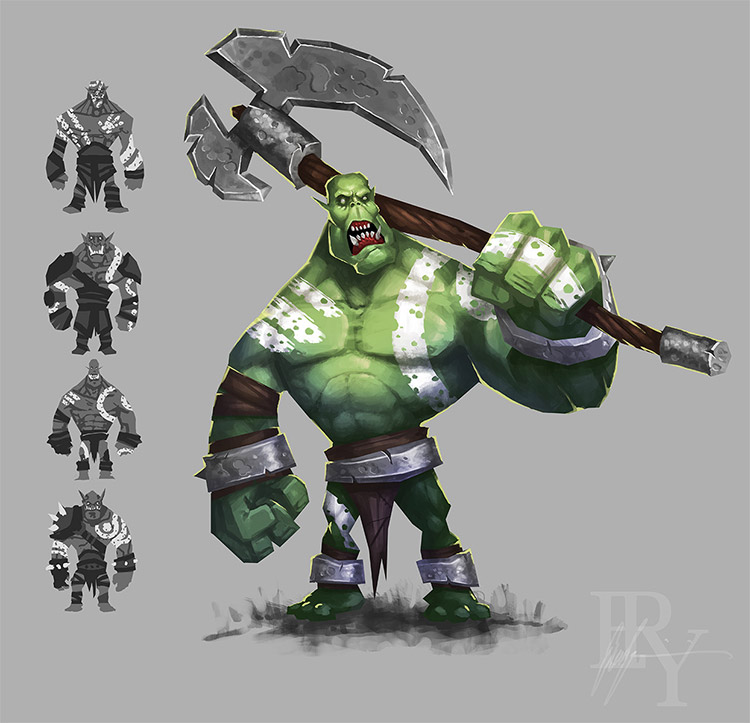
Character designers work hard to create brilliant ideas come to life. Every story needs its characters, and the designer is the very first step of this process.
If you truly love characters and storytelling then this might be a great path to follow. It is highly competitive but if your ideas are good enough then you can make headway.
One of the best aspects about learning character art is the community. You have so many resources at your disposal from character art forums to character artist interviews and other related YouTube videos.
There are even many schools that offer character art courses focusing on the design side of creating believable characters.
But just like everything else in life, if you can teach yourself then you probably don’t need school. It’s all about your determination and committment to see it through.
If you’re looking to dive right into character art then check out these books covering everything from basic designs to digital painting techniques.
But here’s a small list to get you started.
- Character Design From the Ground Up
- Creating Animated Cartoons with Character
- Mastering Fantasy Art – Drawing Dynamic Characters
- Funny!: 25 Years of Laughter from the Pixar Story Room
Environment Design
Another popular area of concept art is digital environment design. Every fantasy world needs carefully-crafted environments for characters to roam. Whether these are harsh wilderness terrains or busy city streets, the environment artist is tasked with designing the look and feel of these areas.
I recently found a brilliant article discussing the career of an environment artist. There’s so much to say about the path, but one common factor is the ability to render environments in detail.
To create realistic environments you’ll still need to master the fundamentals. This is true for all styles of concept art.
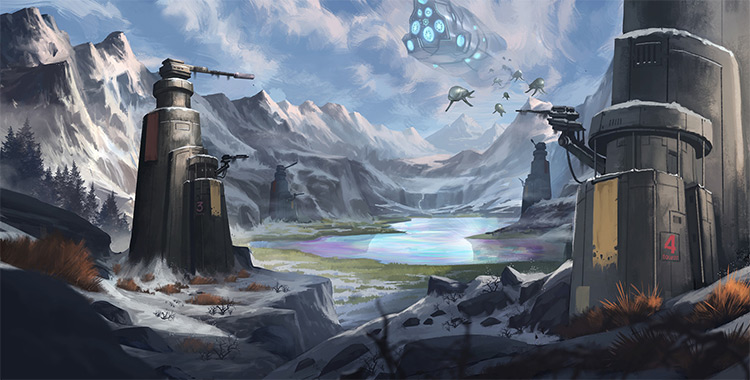
But aspiring environment artists may change their practice regimen once they have a grasp of fundamentals. If you want to do environments professionally you’ll want to focus a lot of time on perspective. That’ll play the biggest factor in each piece.
If any part of your perspective looks off then it can ruin the entire painting.
Environment artists also need to be quick with their artwork. It’s crucial that you can work with any type of environment, even fantasy ideas like alien planets. The concept artist’s job is often to envision worlds that don’t exist and make them a reality.
This requires much more than just art fundamentals. You need an eye for great design. You need to understand basic objects like plants, animals, nature, geology… not to a scientific level to the point where you can replicate ideas from your head.
Feng Zhu has a few concept art videos on environment art and environment thumbnails if you’re looking for inspiration. And there’s no denying the importance of thumbnailing for any type of concept art, but it’s a little different for environments.
Once you understand the fundamentals you’ll really want to practice environments as often as possible. Do a series of thumbnail sketches and paintings over the course of a month. Push your boundaries into subjects you’ve never done before.
As a paid concept artist you don’t get to choose what you want to create. You can choose how it looks, but the client/studio tells you want to make. This means whether you’re asked to design a wealthy manor interior or a sandy desert landscape you’ll have to be comfortable with anything.
Also remember that environments can have people in them too. This means you should have a decent understanding of anatomy and gesture to understand height differences.
Perspective can be implied by adding a person or animal somewhere into the environment. The subreddit /r/BirdsForScale is full of brilliant artwork demonstrating how birds can define perspective in a piece of work.
It’s difficult to recommend learning resources here because there’s so much you have to understand. Start with the basics first, particularly perspective. Scott Robertson’s How To Draw is always my go-to suggestion.
Every environment artist needs to learn how to paint so this will be a big step in your journey. Check out two books by the artist James Gurney: Color and Light along with Imaginative Realism. They will become like reference guides as you learn and progress in your studies.
Props Design
The ability to design any object from any angle is vital to artistic development. Not just for video games, but any career working in movies or TV too. Think of vis dev artists and how much effort they put into colors, moods, and similar areas.
To practice props design you’ll want to study anything that interests you. Not just objects, but styles and aesthetics of different periods. Props for a story set in Victorian era Britain will be different than props found in the American civil war.
All great artists learn to study from life and draw inspiration from real things. History is a great teacher. But so is the real world. Take a trip out to museums and tours of old houses. Bring a sketchbook and draw anything that catches your attention. The more you draw the more you’ll build up a visual library of new ideas.
Think about all the different styles of lamps, stoves, tables, practically anything that could appear in an imaginary world.
It is the prop designer’s job to imagine how this stuff looks from different angles and to render them in detail so that modelers can recreate them from scratch.
Some props designers choose to focus on a specific area of interest like vehicle designs or weapon designs. This is also totally fine. If you’re good enough then studios may want to hire you for freelance work on major projects.
It may be obvious, but the best way to improve is to simply practice props and draw as much as you can. This doesn’t mean you should ignore concepts like figure drawing. But once you understand the fundamentals you might choose to place more emphasis on designing props.
Eventually this will lead to an incredible props design portfolio. The more you practice the better you get, and by studying the work of others you’ll have an end goal to shoot for.
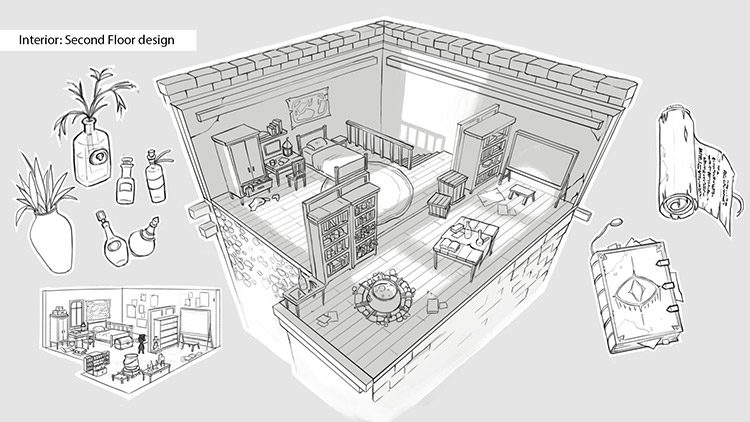
Stay curious and be willing to keep searching for new ideas.
Check out some of our book recommendations on drawing from imagination to practice honing your imaginative skills and your constructionist abilities.
Understanding The Industry
If you’re brand new to art then you likely don’t know much about the concept art industry. It’s a big one with lots of publishers, and while it is competitive there’s always a need for more talent.
If you take this path seriously you can break in. But it takes hard work. This might mean 8+ hours of drawing in a single day for as many days as you can handle. It won’t be easy.
But there is something you can use to help alleviate the fatigue of sitting for hours on end.
Art podcasts are plentiful on the web and totally free to download. They’re great for keeping your spirits high and helping you push through bouts of fatigue.
Industry professionals are always happy to share bits from their journey and teach others a little about how the industry works. If you want to learn more and fill up some time while drawing then refer to some of the concept art/digital art podcasts below.
If any stand out to you then be sure to bookmark them for later!



